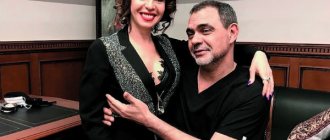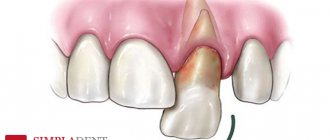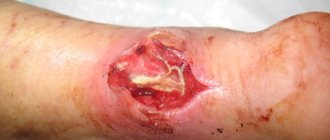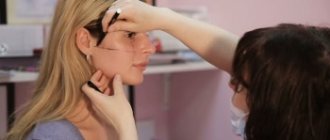Development of maxillofacial surgery
In medicine, the development of maxillofacial surgery is most relevant. This is due to such complex diseases as treatment of diseases and pathologies of the oral cavity, various deformations and pathologies of the facial skeleton and face, inflammation of the maxillary sinuses and salivary glands. A qualified specialist also treats tumors on the jaw bones, various injuries of the facial skeleton, performs rhinoplasty and bone grafting, and reconstruction of various areas of the face after injuries. Only a true professional will cope with his task, given the proximity of the diseased organ to the brain and the fact that the face is the calling card of its owner.
Biography
In 1995, Andrei Nikolaevich graduated from the largest university in Russia, First Moscow State Medical University named after. THEM. Sechenov, specializing in general surgery. The following year, he completed his subordination in thoracic and maxillofacial surgery.
In 1999, he completed his residency at the Federal State Budgetary Institution “TsNIISiChLKh”, and in 2003 he defended his Ph.D. thesis. The topic of the dissertation was chosen on ortagnathic surgery. The essence of this medicine is to correct pathologies of the dental system and improve the aesthetic parameters of the face (malocclusion, disproportionate facial parameters, consequences of facial injuries, etc.). Specialists (orthopedists, orthodontists, surgeons and osteopaths) work as one team to achieve the best treatment results.
Andrey Nikolaevich Senyuk completed an internship abroad for several years: in the UK, USA, Germany, Switzerland, Spain, Belgium, Lithuania, Italy, Latvia, and France.
In October 2013, the first International Conference on Orthodontics and Orthofacial Surgery was held, in which specialists from Europe, Russia, the USA and Latin American countries took part.
Andrey Nikolaevich Senyuk has written about 40 scientific publications and participated in several foreign conferences on maxillofacial surgery.
Despite his fruitful work, Andrei Nikolaevich finds time for hobbies and hobbies: boxing and alpine skiing.
“Naturally, at the time of my choice, I wanted to get decent equipment in order to perform the full range of necessary manipulations. I really got what I wanted and I’m completely satisfied with the Brumaba table.”
Senyuk Andrey Nikolaevich
Andrei Nikolaevich Senyuk entered the State Medical Institute (BSSR) in 1988 and graduated from the I.M. Sechenov Moscow Medical Academy in 1995, receiving the qualification of a doctor with a specialty in general medicine.
Sub-residency in thoracic and maxillofacial surgery
In 1996, after completing an internship at the Department of Maxillofacial Surgery, MMA received the qualification of a maxillofacial surgeon
In 1999, he completed his residency at the Department of Oral and Maxillofacial Surgery at the Central Research Institute of Dentistry.
In 2003 he defended his dissertation on the topic of orthognathic surgery. Currently completing his doctoral dissertation
From 1996 to 2010 specialized in dental implantology and maxillofacial surgery in the USA, Great Britain, France, Switzerland, Germany, Belgium, Spain, Italy, Lithuania, Latvia.
Annually gives presentations at international sections and conferences on maxillofacial surgery. He held the first conference in Russia on orthofacial surgery. Author of more than 40 scientific publications. He is completing his doctorate in orthofacial surgery.
Main areas of scientific and practical activity:
- • dento-alveolar surgery
- • orthognathic surgery
- • maxillofacial traumatology
Performed operations:
- — Osteotomy of the upper and lower jaws using 3D design technologies and stl templates.
- — rhinoplasty, including for congenital cleft lip and palate
- — bone grafting of the alveolar process with austoxenografts, distraction osteogenesis
- — reconstruction of the upper, middle and lower areas of the face after trauma and post-traumatic deformities
- – sinus lift and sinusotomy
- — restoration of the volume of the attached mucosa using connective tissue flaps, including those rotated on a vascular pedicle.
Andrey Nikolaevich is currently practicing on the Brumaba operating table at the ART ORAL clinic in Moscow by Sergei Chikunov.
Review
“I have been working with the Brumaba table for more than 10 years; it is a very reliable medical equipment. Over the entire period of operation, the table has established itself as a high-quality, trouble-free equipment. The convenient thing is that this is a completely autonomous thing that does not require additional connections, which can be installed as you want and where you want, in any place convenient for you. Brumaba occupies a leading position in the domestic market. Naturally, I wanted to get decent equipment in order to perform the full range of necessary manipulations. And I really got what I wanted and I am completely satisfied with the Brumaba table. I rarely use the side tilt in its pure form. I have a memory cell programmed for a slight tilt. This is necessary to provide better access to the patient because most dentists interact with the patient on the right side, and a slight tilt to the right side is encouraged, which is technically easy to achieve with the Brumaba. An important detail of the table is the presence of a headrest. I am very used to it, it adapts to the patient and, if you are not lazy, you can set it to the ideal position, depending on the shape of the skull, hairstyle with the help of a little manual work, which will be comfortable for everyone - both the patient and the doctor. I work with a desk both standing and sitting. But mostly standing, raising the table to a comfortable height. The optimal height also depends on what type of dentition I am working with. If we are talking about surgical dentistry, dento-alveolar surgery, I lift the patient a little, closer to the “half-sitting” position. If I’m working with the upper row of teeth, I try to place it horizontally.”
clinic ART ORAL Moscow Sergei Chikunov.
Sergey Chikunov is a member of the American Association of Gnathologists (AES). In 1988 he graduated with honors from the N.A. Semashko MMSI. In 1989-1993, clinical residency, postgraduate study at the Department of Orthopedic Dentistry of the VNPO “Dentistry”. In 1993 defended his candidate's dissertation. In 1993, private practice in Moscow “ART ORAL” together with Klaus Muterthies. In 2001 he founded an innovative institution known for its training cycles with the world's leading gnathologists: prof. Klaus Avril (Italy), Prof. Karl Wiers (USA), Prof. A. Gutovsky (Germany), Dr. V.D. Sier (Germany), Dr. Schumacher (Germany), Dr. Gregor Slavichek (Austria). In 2009, in collaboration with prof. V.A. Khvatova published the book “Occlusal splints”. In 2010, he became chairman of the “Clinical Gnathology” section of the Dental Association of Russia (StAR). In 2012 he was awarded the medal of the Academy of Sciences for his discovery in the field of medicine and the Badge of Honor for his contribution to the development of science and the economy of Russia.
Professional activity
Andrey Nikolaevich Senyuk works in a large surgical center, which performs operations in the field of dentistry, bone grafting, dental implantation, reconstructive and aesthetic surgery. Doctors use minimally invasive techniques and endoscopic techniques, thereby reducing the number of surgical interventions. The surgical room is equipped with innovative cleaning and video endoscopic equipment. After plastic surgery of the maxillofacial area, patients have the opportunity to stay in comfortable rooms.
Senyuk A.’s work in the maxillofacial surgery clinic allows her to perform unique and complex operations:
- all types of treatment for pathologies of the upper lip and palate;
- osteoplastic surgery on the face;
- reconstruction of various areas of the face after injury;
- treatment of post-traumatic deformities and many others.
The Maxillofacial Surgery Clinic has the latest diagnostic and surgical equipment, which allows it to provide medical care in accordance with European standards.
A. Senyuk is a professional and experienced doctor who makes a significant contribution to the development of domestic medicine.
Reviews
It all started with a pearl necklace. My husband gave it to me. I looked in the mirror and got upset. For pearls, the teeth must be perfect. But mine are not ideal. Not completely ugly, but... not that. And the color is not the same, and the quality - in general, it’s time to take them on.
I went to the orthopedist. “Give me crowns,” I say, “so that my teeth are straight and white.” “No question,” said the orthopedist. — I’ll do the upper teeth. - And the lower ones? - I won’t do the lower ones. It's crowded there. I can't put one crown on two teeth. To get dentures, you first need to undergo orthodontic treatment.
I went to the orthodontist.
“We’ll fix the crowding,” said the orthodontist. - But your bite is wrong. Deep". She told me to close my mouth, looked at me and added, as if addressing myself: “Well, yes. It’s immediately obvious.”
“Immediately visible” touched me. I didn’t know what exactly was “immediately visible” on my face. But I didn’t want anything to be “immediately visible” there. Then I realized what was meant. Sagging cheeks and double chin. “Excess soft tissue in the lower part of the face,” aesthetic surgeons delicately call this phenomenon. From about the age of 40, I fought it with all my might. I just didn’t do the lift, but everything else went through. Six “lasers”, after which I was swollen like a pig for a week. Biorevitalization - without counting. Hundreds of mesothreads in the cheeks and chin. And much more, costing immeasurable amounts of money and suffering.
There was an effect. But not for long. And not as radical as I wanted. The chin tucked a little, the cheeks rose a little. But an even oval did not work out. The lower part of the face remained somehow swollen and crumpled. I would be resigned if everything was the same for my peers. But my classmates looked different. Everyone has wrinkles, yes. But someone’s face floats and sinks, like mine. And for some, the oval remains clear - just like in his youth.
I am 56 years old. I don’t have a goal to look 60 by 30. A “transformer grandmother” will remain a grandmother, no matter what operations you perform on her. But I want to age gracefully. Look decent at any age. With “lowering of the face” this is not realistic. Thanks to the orthodontist, I understood why it was lowering. Due to malocclusion. This is a medical problem, but it results in an aesthetic defect, since an incorrect bite disrupts the proportions of the face. Ideally, the face is divided into three equal parts: 1) forehead to the bridge of the nose, 2) nose and 3) lips with chin. Due to malocclusion, my lower third of my face is smaller than my middle and upper third. The jaws, the hard frame that holds the skin and muscles, are too small for my “soft tissue.” In my youth this was not noticeable. On the contrary, it’s even cute - a small chin like a doll’s. But with age, the cheeks begin to sag. Improperly formed jaws cannot hold them.
What's the solution? You can partially remove the soft tissue - do a circular lift. But it is more correct - both physiologically and aesthetically - to increase the solid frame. Grow my jaw bone to a size that matches the proportions of my face. Simply put, surgically correcting malocclusion.
This is an orthognathic operation. The orthodontist advised me to undergo surgery with maxillofacial surgeon Andrei Nikolaevich Senyuk.
At the first consultation, Andrei Nikolaevich explained that in my case it was enough to operate only on the lower jaw. But cases, as I later learned, are different. Often you have to operate on the upper jaw too, and sometimes even do several operations. To prepare for the operation, I wore braces for about a year. Not very pleasant, but what can you do. But I lost 5 kg. The operation was easy. For two weeks, of course, I looked like a hamster. But in the third week everything became noticeably better, and after a month and a half I already saw the outlines of my new face in the mirror and was glad that I had not started everything in vain.
But many people write about the operation here on the site. I want to talk about something else. The fact that before my “ortho-epic” began, I myself did not see any defects in my appearance caused by an incorrect bite. But when I saw them, I began to pay attention to other people - in the subway, for example. And I was amazed at how many people we have with the same problem. Both women and men.
Some people's appearance defects are so obvious that they simply cannot be ignored. I restrain myself from saying: “You can have one operation and you will become a beauty, write down the surgeon’s name - Senyuk.”
These people don’t see what their problem is, just like I didn’t. They think to themselves: “It’s not a defect, it’s just that my face is like that. Small chin, my mother had the same one. Teeth were worn out prematurely—we all have bad teeth in our family.” It seems like this is my peculiarity. And this is not a feature. This is an incorrect bite. It could be corrected with braces until the age of 12. After 12 years - surgery. And it's worth doing.
I still had to wear braces for a few months after surgery, and I continued to see my orthodontist. During one of her visits, this truth-loving woman suddenly said: “You have become so younger. So much better. What a pity that you didn't have surgery sooner. We wish we could stay like this for a little longer.” “Actually, 56 years is not that long. I still have time to “walk like this,” I thought. But she said nothing. The orthodontist said everything correctly. Not very tactful, but correct.
Of course, this operation should have been done earlier. But I just didn't know about her. I didn't know I needed her. Nobody told me about her. And I really really regret this.



